"When was the last time anything came out of Japan that was truly, globally innovative?” It was an unusual question for an executive at the very top of a Tokyo-based car maker to be asking a journalist, brow furrowed and eyes glistening with frustration at the point he was making. “You need to go back to the 1980s at least. Everything since then has been about refinement.”
These were comments born of frustration, the words of someone who had been held to task for the ever-decreasing benefits of, as he put it, “squeezing the same lemon for more juice”. Golden years had turned to steady years and now – through the lens of a rapidly changing automotive world – he was sat staring at what he summarised as little more than a trickle of opportunity.
It had been a long day at the Tokyo motor show and there’s little doubt that overexposure to an room, spreadsheets and senior management keen to impose rising sales targets coloured the mood. Japan, lest it be forgotten, is ranked in the top three global economies, is one of the largest filers of patents in the world and is the largest producer of electronics goods globally. It is also the third-largest automotive manufacturer, behind only China and the US.
Yet here was an ungilded – and unattributable, for obvious reasons – view from a show floor that was hot on mid- to long-term conceptual visions of mobility, electrification and connectivity, but short on cutting-edge real-world launches. “The US can point to Tesla, Europe VW, Asia Hyundai: where is Japan’s leadership in innovation, investment and risk taking?”

A wide-angled view of the Japanese market highlights some of the issues the industry is facing, as well as painting a perhaps more balanced view of some of the pockets of success: from Nissan kick-starting the SUV boom with the Nissan Qashqai (albeit through its European design centre), plus its front-foot launch of the Nissan Leaf, to Toyota’s unchallenged global leadership with hybrids and consequent market-bucking sales performance.
Felipe Munoz, senior analyst for Jato Dynamics, believes the latter point is perhaps the most relevant for anyone trying to plot the trajectory of Japanese automotive innovation, especially around electric cars. “It is not that they have been slow to move to EV but the focus has been different,” he says. “As Toyota is the absolute leader there and it has focused on hybrids, the politics and regulation have been designed around them. Of course, the global view has shifted and so, too, has Toyota – and now it is just a matter of time before we see a rapid takeover of EVs in Japan.”
It’s moot, especially as to date almost every new powerhouse in the car industry has been driven to global success by first dominating its home market. It’s why, for instance, Hyundai-Kia was able to fund its expansion beyond its home shores and why Chinese car makers have struggled to make an impression beyond their own, admittedly vast, borders.
Within that explanation, however, there is a concern for future focus as a result of famously esoteric Japanese tastes. “The breakdown of sales in Japan highlights the demand for kei cars and MPVs, which are quite useful when space is a limitation in cities,” says Munoz. “They dominate, with positive and negative consequences. On one hand, they give the market stability, as they are cheap and not exposed to economic cycles. On the other hand, as they are only conceived for the Japanese consumer in Japan, they are not popular abroad and they don’t have export potential.”
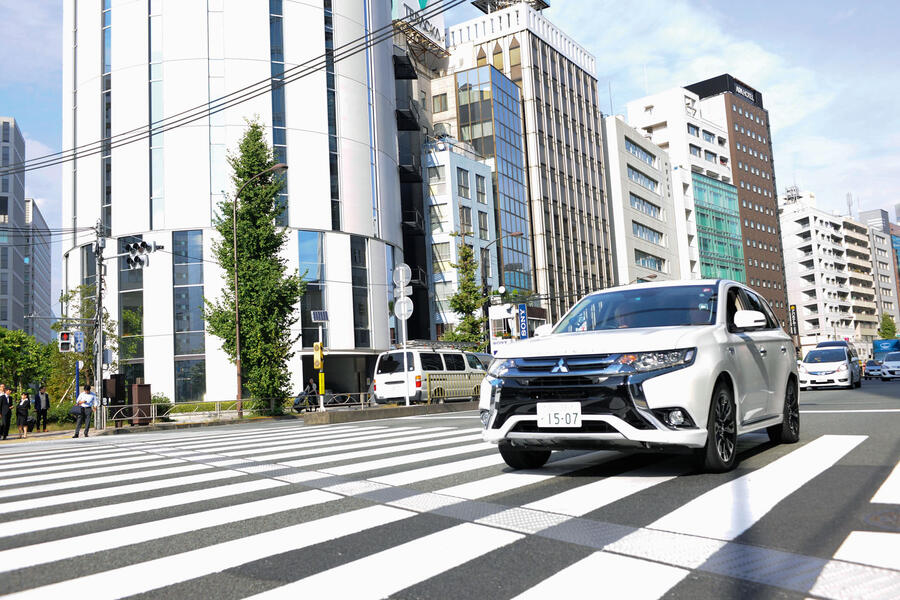
A look at export data highlights a story of mild, recent decline after years of growth. While Japanese new car sales have been remarkably stable over the past decade, figures suggest that the impact of relatively high labour costs and frequently fluctuating currency swings for the yen have led to an export downswing. “Factories in India, Thailand, Vietnam, Indonesia and Latin America have been the beneficiaries,” says Munoz.
However, it is also true that Japan remains the world’s second-largest automotive exporter after Germany and it is already seeking to rebalance its efforts, most notably with the free-trade deal agreed recently with the EU, of which the UK is not likely to be a part. It is also rebalancing its global footprint to have a more domestic bias, evidenced by the closure of Honda’s Swindon plant and the shift of planned Nissan X-Trail production in Sunderland back to Japan.
Against the measure of Japan’s historical success, these are, of course, significant problems. However, in a time of transition, they are also being faced by an industry that remains in a position coveted by almost every other nation and that has a line-up of individual marques with the resources to respond. What’s more, it’s still possible that the slow, cautious start into EVs – Nissan aside – may actually be a blessing. After all, Toyota’s profit margins remain the envy of the mass market, whereas few, if any, EV makers are yet in the black. Better, perhaps, to lead in autonomous and connectivity knowhow than the commoditised world of electric motors and batteries.
The difficulty is in picking a winner during this interim period of uncertainty, when even those closest to the issues don’t know the solutions and a wilfully conservative culture leans further than almost any other into modest projections, preferring actions over words, and precision and understatement over publicity storms via social media. On the following pages, we analyse whether Japanese car makers are facing a long-term slide or a period of transition from which they will emerge as strong – or stronger – than ever. Jim Holder
Honda
It's easy to forget that Honda is really three separate companies. It makes cars, motorcycles and ‘power products’ (such as generators, pumps and agricultural equipment).
According to the latest full-year accounts (which ran to April 2019), Honda sold 5.32 million cars globally, up by more than 2%. It sold 6.3m of its power products and a massive 20.24m motorcycles. The company made a middling profit margin of 4.6%, although that does translate to more than £5 billion profit.
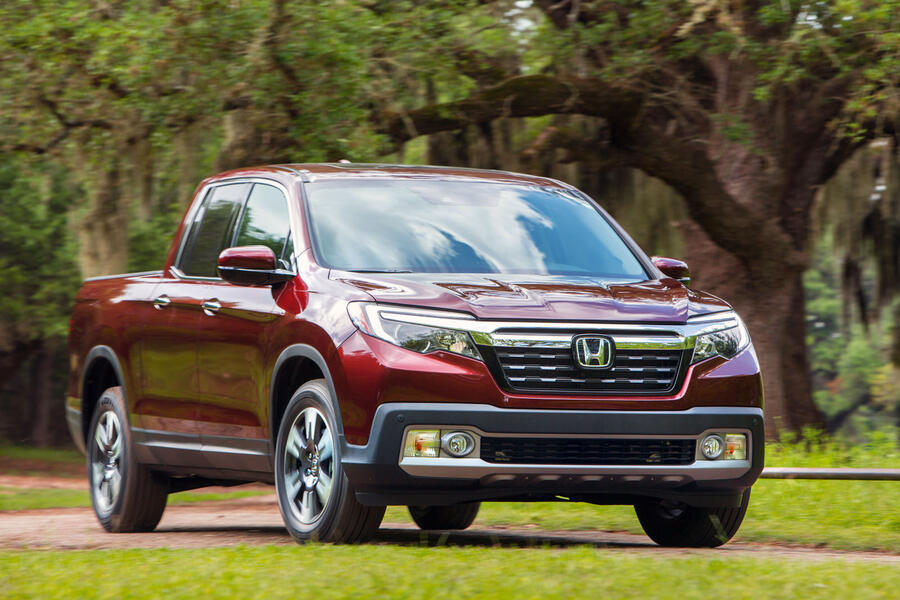
On the car side, Honda’s profit margin may suffer from it having only a very small presence in the global premium sector, despite its US-centred Acura brand. For example, between January and August 2019, Honda US sold near 991,000 vehicles, but Acura just 102,000 units across six nameplates.
Its profit margin is also affected by Honda shifting significant numbers of vehicles in the very price-competitive Asia markets. The HR-V baby crossover sells over half a million a year, with the majority of sales in China. Motorcycles sales also produce very thin profit margins, even though the unit sales are huge.
Honda has tried to tap into the huge margins delivered by pick-ups in the US, too. It has been building the Ridgeline since 2004, but monthly sales in the US mostly average around 3000. By comparison, Ford’s market-leading F150 sold over 900,000 units in 2018, which translates to more than 75,000 a month on average.

The Honda CR-V, though, is a huge global hit for Honda. It’s the best-selling model in the US, followed closely by the Honda Civic, which is expected to sell more than 350,000 units in the country in 2019. Indeed, August 2019 was the company’s best sales month to date in the US, with 174,000 vehicles sold, around 100,000 of them being crossovers and SUVs.
Honda also misses out on the healthy margins that usually follow commercial van production (Ford profit margins on the Transit family are far higher than BMW can manage, for instance) as it does not have a commercial vehicle division.
In its home market, Honda was the second-biggest seller in 2018. It sold 749,000 vehicles (its N-Box kei van being a best-seller in its segment) in a market of 5.26m new cars.
Honda slipped to a loss at the beginning of the year because of the costs of closing its UK plant. And Europe is where Honda’s biggest problem lies.
It may be a super-competitive market, but it sold just 169,000 cars across the continent over 2018-19 and forecasts are even lower for 2020. For a company that sold 1.9 million vehicles in the US, that is a disaster. It’s possible Honda has now lost any serious foothold in Europe. Hilton Holloway
Nissan
Nissan should be in an enviable position compared with its Japanese rivals: with the Juke and Qashqai, it basically sparked the SUV craze, the Leaf is one of the longest-running and most successful electric cars going and an alliance with Renault gives it incredible scale.
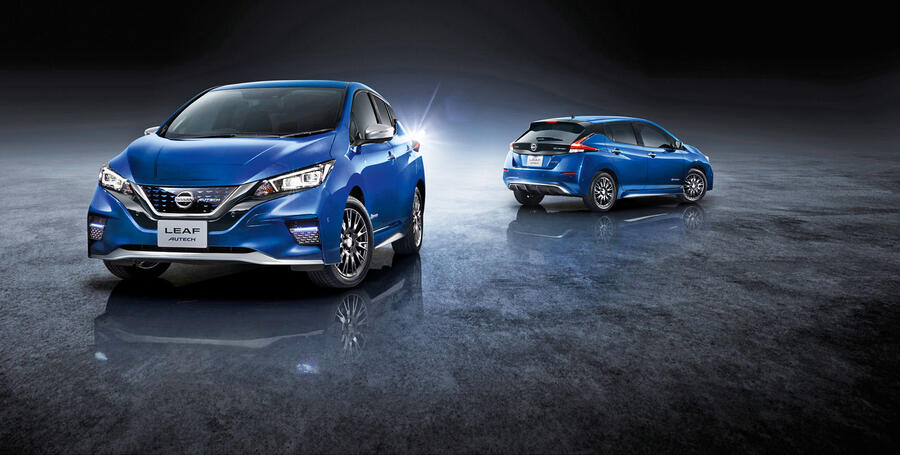
Except that instead of making the most of that position, Nissan is currently engulfed by an executive drama of Hollywood proportions. It started with the shock arrest and ousting of chairman Carlos Ghosn and executive Greg Kelly on a string of financial charges.
Ghosn’s court case has only just begun, but the allegations have kept coming. More revelations in an internal report prompted the resignation of CEO Hiroto Saikawa and it now falls to former China boss Makoto Uchida to steady the ship.
The first tasks on his mammoth to-do list will be to stem the losses and stabilise the share price, firm up the company’s behind-schedule turnaround plan and – most crucial – repair the relationship with Renault post-Ghosn.
Once that is done, Nissan still faces a tough task defending its SUV and EV patch from a growing list of contenders. James Attwood
How's life at Mitsubishi Motors after the Evo? That’s what we asked a year ago in an in-depth look at the car-making arm of the vast Mitsubishi Corporation.
And we found a car company with a new lease of life that had settled on gaining as much as it could from common architectures, standards and services and associated cost savings away from the customer’s eyes, while being poised to start leading development across the Renault-Nissan-Mitsubishi Alliance (formed in 2016 after Nissan bought a 34% stake in Mitsubishi) of true four-wheel-drive SUVs, plug-in hybrid technology and pick-ups.

Yet the question a year on from that should be: how’s life at Mitsubishi after the fall from grace of Carlos Ghosn? The man best known for leading Nissan and Renault was also chairman of Mitsubishi and the company had quickly been built up in his image. It needed to change because, before Nissan came in, Mitsubishi was at rock bottom – share price included – after it was found to have falsified fuel economy data in Japan.
Ghosn bought in several ex-Nissan bosses, including Brit Trevor Mann as chief operating officer and Vincent Cobee as strategy boss, yet they have since followed Ghosn out the door. Long-standing CEO Osamu Masuko, who surprisingly had kept his job after the fuel scandal, is also gone.
Although small in Europe and even relatively so in its domestic market compared with the giants of Toyota, Nissan and Honda, Mitsubishi is big in other emerging markets, such as Indonesia (topped only by China as Mitsubishi’s biggest global market), Thailand and the Philippines, as well as parts of the world where its rugged off-roaders and trucks appeal, such as Australia and Russia.
That’s reflected in the appointment of Takao Kato as CEO. Formerly Mitsubishi boss in Indonesia, his vast experience in emerging markets will be of benefit to the company in not only maintaining but also growing its presence there.
Look at Mitsubishi now without the rose-tinted glasses that show the Evo and it’s the Outlander PHEV, first revealed in 2012, that’s front and centre. Updated last year and due to be replaced by the end of 2020, it’s the world’s best-selling plug-in hybrid.

There’s undoubtedly an element of good fortune in the success of the Outlander PHEV, which was the right car at the right time to take advantage of taxation changes in many European countries. It has fallen away in some areas, most notably the Netherlands after it changed the subsidies towards plug-in hybrids, but Mitsubishi insists sales have remained firm elsewhere, including the UK after the government removed the £2500 plug-in hybrid grant last November.
Outlander PHEV sales in 2019 to the end of August are comparable with 2018’s (4428 in 2019 versus 4521 in 2018). Mitsubishi also refutes suggestions that few owners charge them up and buy them just for the tax breaks, with a study showing 90% of owners charge their cars two to three times a week.
Post-Ghosn, Mitsubishi is sticking to what it knows: development of plug-in hybrid technology, which, it maintains, offers the best of both worlds and is a progressive step towards electric cars, four-wheeldrive technology and SUVs, three areas that sit together quite happily.
Its three SUVs in Europe – the Mitsubishi ASX, Eclipse Cross and Outlander – will be electrified and moved further apart in size in their next generation to give each more room to breathe and a more distinct identity. The allnew Mitsubishi L200 pick-up, launched earlier this year, is important in maintaining Mitsubishi’s rugged grass-roots workhorse appeal not only here but also in south-east Asia and Australia, while the Shogun Sport is innovative in making an SUV out of L200 underpinnings, albeit quite crudely.
The Evo question still hasn’t gone away. You sense there’s a will in the company deep down to make one, yet if it’s ever to return, it will likely do so as a crossover/SUV and be electric. Mitsubishi’s recent Mi-Tech concept shows a powerful four-motor electric system with considerable performance potential…
Yet the repositioning of the brand as a maker of true four-wheel-drive SUVs makes the absence of an Evo less troubling than the absence of a Shogun, Mitsubishi’s other icon. Reinventions of the Mercedes G-Wagen, Jeep Wrangler and Land Rover Defender in the past couple of years should have persuaded Mitsubishi that there’s the appetite for such a car. Mark Tisshaw
After a long winning streak, Subaru stumbled in 2018. It made a total of 1,019,364 cars (down 5% on the year before), with 680,000 of them sold in the US. However, 2018 was also marked by its first quarterly loss since 2010 as it was forced to confront various quality issues, including recalling more than 400,000 models for faulty valve springs. The recall cost was estimated at $500 million.

Subaru relies on American consumers, having established itself over 20 years ago with the Forester and Subaru Outback, innovative lightweight crossovers in an era of truck-based SUVs. Last year, it sold 171,000 Foresters and 178,000 Outbacks in America. Sales in Japan are a modest 100,000 units annually, 22,000 of those kei cars.
The company is now rolling out a fresh generation of vehicles based on its new global platform and has added the seven-seat Ascent crossover to its US line-up. But globally, it is a small company, which is why Toyota’s decision in September to take a 20% stake in Subaru is good news. The two will develop a joint platform for a future electric crossover and will continue to collaborate on hybrid drive and all-wheel drive. Hilton Holloway
Suzuki couldn't have garnered much more attention in the past 12 months than it has with its latest Jimny, which stays true to its quirky, off-road roots. While the new Suzuki Jimny has created a ‘halo’ effect, the Suzuki Vitara is Suzuki’s biggest-selling car in Europe, making up a third of sales and helping the maker to hold a 1.5% market share last year, totalling 245,653 units.
That’s modest, but it’s a different story in Japan: Suzuki is the thirdbiggest-selling car maker, with 714,594 units.
Worldwide, Suzuki production increased by 4% last year, buoyed by particular success in its home market, India and Pakistan. So far, Suzuki has been slow off the electrification mark, offering just two mild-hybrid models, the Ignis SZ5 and Swift SZ5, in the UK.

A deal with Toyota, announced earlier this year, will help the cause and enable the production of two Suzuki-badged hybrid vehicles based on the Toyota RAV4 and Toyota Corolla. The two firms will also collaborate on an autonomous driving project.
Suzuki gave a taste of its self-driving future at the recent Tokyo show with the Hanare concept, a pod-style autonomous vehicle. It was shown alongside the Waku SPO, an innovative compact car that could morph from a coupé to an estate at the touch of a button. Rachel Burgess
Mazda
Mazda's bold approach to reducing fuel consumption and emissions is ensuring it carves out a niche in this increasingly electric world.
While many makers are moving away from traditional powertrains, Mazda couldn’t be more effusive about petrol and diesel. It quotes research showing that, even in 2050, more than half of the cars sold globally will use an internal combustion engine.
Its innovative spark-plug-controlled compression-ignition Skyactiv-X petrol unit, launched on the Mazda 3 this year, relies on two technologies – lean-burn combustion and compression ignition – to reduce fuel consumption and CO2 emissions while delivering good performance.
Mazda insists that diesel has plenty of life in it yet. Although most makers will happily say that diesel still has its place, few are investing in major R&D. Mazda UK boss Jeremy Thomson explains: “We’ve been affected, as everybody has, by the downturn in consumer confidence in diesel, but I think there will be a bounce back. Whereas many manufacturers are walking away from it, we see a place for it.”
Next year, we will see a new-generation Mazda diesel engine that’s likely to use similar technology to the Skyactiv-X unit. “In 2020, we have a new approach to diesel engines,” says Europe R&D boss, Christian Schultze. “We will show you how clean and very efficient diesel engines can be.”
Global R&D boss Ichiro Hirose adds: “In terms of the evolution of the diesel engine, we have always been consistent: how can we mix the air and fuel in a very good manner for emissions? When it comes to fuel economy and emissions in diesel, we still have a lot of room to improve.”

Of course, Mazda can’t ignore electrification and recently announced its strategy, including revealing its first EV, the MX-30. Beyond the MX-30, which will be launched in the UK in early 2021, no electrified models are confirmed but expect a plug-in hybrid within the next 18 months on a high-volume car such as the 3.
Mazda is basing its EV strategy on life-cycle CO2 emissions rather than just those at the tailpipe. As a result, it has introduced the MX-30 with a 35.5kWh battery, which doesn’t offer huge range or power but does ensure that goal. Its study shows that the MX-30 will emit significantly fewer life-cycle emissions than a 95kWh EV (such as the Audi E-tron).
There will be a hybrid range-extender variant of the MX-30 powered by a rotary engine in the next couple of years. It means the revival of Mazda’s famous rotary engine, last seen in the RX-8, which went out of production in 2012. It has been developed for use in a number of applications, including as a power generator in range extenders, hybrids and plug-in hybrids as well as working with hydrogen and LPG.
Beyond that, Mazda is in the early stages of looking at other powertrain options, such as recyclable liquid fuels from microalgae. There is no clear time frame for its introduction. Hirose says: “We still have lots of problems we need to overcome with algae fuel. To achieve our targets [reducing CO2 emissions by 50% in 2030 from 2010 levels], we have to start working on it now or we will be out of time.
“The biggest problem is productivity. This one alga produces oil, but the amount is too small to commercialise it as fuel. We are using genome editing to boost the oil production from the microalgae.”
Mazda is hopeful its broad-brush approach will pay dividends in the industry’s fast-changing landscape, believing electrification isn’t the only option. Schultze says: “If we come into an age when sustainable fuels are economically similar, why not use them? We hope governments wake up and see that electrification is one way but there are others, too. Skyactiv-X is a step in the right direction.” Rachel Burgess
Toyota
Dependable, reliable, trustworthy… all words traditionally associated with Toyota that risk damning it with faint praise and rather overlook the incredible transformation it has undergone in recent years. This is best illustrated by Toyota’s shift from bland to shocking styling but underpinned by everything from its hybrid and fuel cell dominance to the dynamic ability of its TNGA platform and rumoured leadership in the breakthrough field of solid-cell battery technology. Then there is the heartfelt development of electrified, autonomous mobility solutions created with an emphasis on aiding the infirm, elderly and disabled.
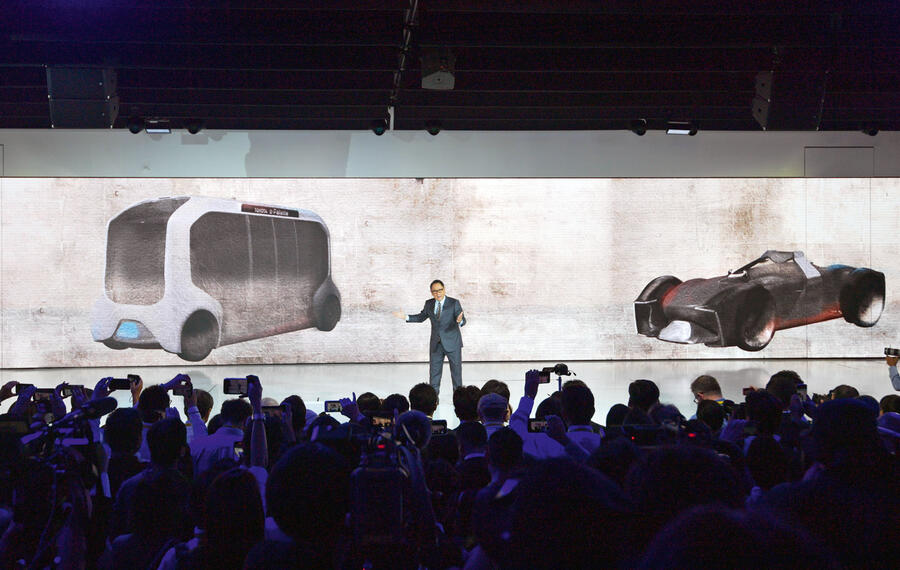
Certainly anyone who witnessed company president Akio Toyoda’s charismatic Tokyo motor show speech – made on a stand that didn’t have a single traditional car on display, but rather a dizzying mix of autonomous pods, disability mobility aids and, erm, an electrically driven witch’s broom – couldn’t criticise either the scale of the firm’s ambitions or the absolute integrity of its intent. Pronouncements emerging about the firm’s future plans may frequently sit somewhere between being inscrutable and baffling, but cut through the chaff and a picture soon emerges of a world leader in action.
The driver behind this – beyond Toyoda’s inspirational leadership – is the Toyota Group’s trend-busting financial health. By most measures, it is not only the world’s largest producer of cars – a goal it has notably never set itself, nor publicly set any store by – but also one of the most profitable. Its margins have been averaging around 6%-8% over the past five years, a level that has, at times, rivalled that of much smaller, purely premium car makers, let alone ones in the mainstream where Toyota predominantly lives.
Data from analysts LMC Automotive suggests that while so-called light-vehicle (car) production in the Asia-Pacific region is on course to drop by 6% year on year in 2019, mainly as a result of output declines in China and India, Toyota’s production volume is expected to grow by 5%. That will mean it is one of only two of the top 10 makers in the region to grow. Likewise, and more significant for stability, Toyota’s global output is expected to rise 3% against a market average drop of 5%.
Driving this volume growth are refreshed mainstream, global models such as the Corolla and RAV4 – both significantly sold with hybrid options, as are an increasing number of Toyotas like the revised CH-R and new Yaris. When car making is done well, large profits follow – and this cash-rich environment is the ideal one from which to be making the huge capital investments required at a time of change and instability.
This scale also gives Toyota opportunities that others are scrabbling to replicate, be it through acquisition, merger or partnership. Not only can it spread its investment costs across more cars sold than rivals, but it has also been growing its influence by setting the standard around co-operations for some time, both at home (it holds shares in Mazda, Subaru, Suzuki and Yamaha, among others) and internationally (most notably with BMW, on projects including everything from the Supra to fuel cell development).
Critics say Toyota has been slow to develop electric cars. Insiders say it remains unconvinced that battery-electric technology is the right environmental answer. But with the world’s leaders having set a seemingly prescriptive course, Toyota is now using its hybrid know-how to respond, unleashing its scale and profit-driven R&D budgets to ensure it remains at the top of the industry. Jim Holder
Motorsport in Japan
The national motorsport scene in Japan has earned global cult status. Headlined by Formula 3, Super Formula (an equivalent to Indycars), Super GT and, more recently, its own sport of drifting, Japanese motorsport thrives within its own ecosystem, almost totally self-contained and for the past 30 years dancing to its own tune on rules and regulations. The cars are fast and spectacular, the home-grown heroes know the circuits intimately and, like everything in this fascinating country, it all feels exotic and a bit alien to Europeans.
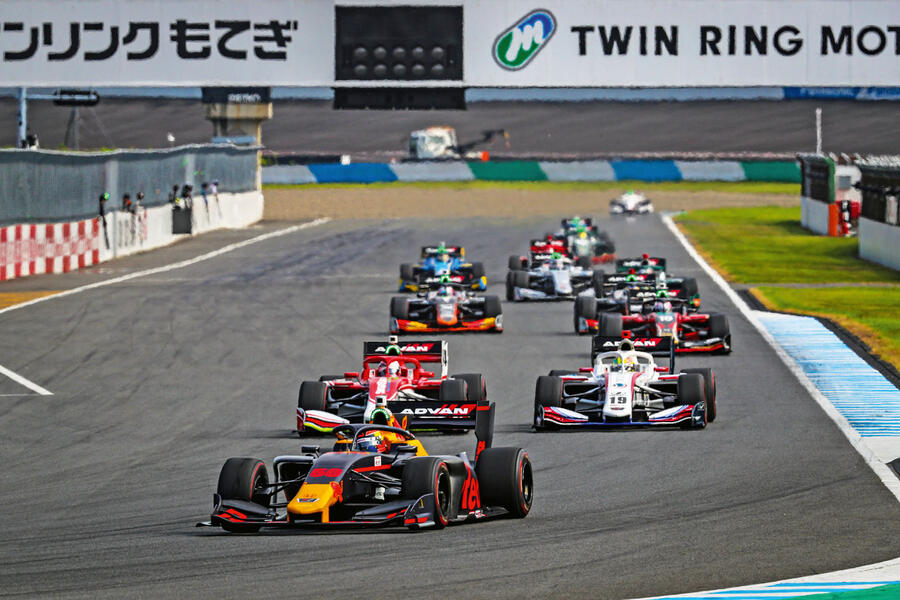
The other attraction for foreign drivers is that you can get paid to race in Japan – and get paid well. That’s what drew a generation away from Europe in the 1990s. Eddie Irvine was the best-known example to use All-Japan Formula 3000 (as Super Formula was then) as a springboard to Formula 1, but the list of those who joined and followed him is long. Nearly all who experienced Japan returned with tall tales of great racing, lovely people and the odd bit of hedonism from nights out in Tokyo.
Today, Super Formula thrives, with a bespoke Dallara chassis, sticky Yokohama tyres and Honda and Toyota vying for engine superiority. Honda, Lexus and Nissan also do fierce battle in Super GT, a series last year won by avid Japanophile Jenson Button. He, like so many before him, found the whole scene and its unique racing culture a breath of fresh air, especially after so many years immersed in uptight F1.
Change could be on the near horizon, following a recent ‘dream race’ that mixed DTM and Super GT at Fuji after years of talks about such a collaboration. Opening that door is exciting – so long as it doesn’t pollute one of the most colourful, diverse and healthy racing ecosystems found anywhere in the world. Damien Smith
Japanese makers' future in the UK
The love story between Japan and the UK has soured recently, as the industry’s trials and tribulations have hit car manufacturing. Honda’s shock announcement last year that it will close its Swindon plant in 2021 when the current Civic generation ends means the loss of 3500 jobs. Honda attributed the move to “unprecedented changes in the global automotive industry”, adding that “resources and production systems for electrified vehicles will be focused in regions with a high volume of customer demand”.
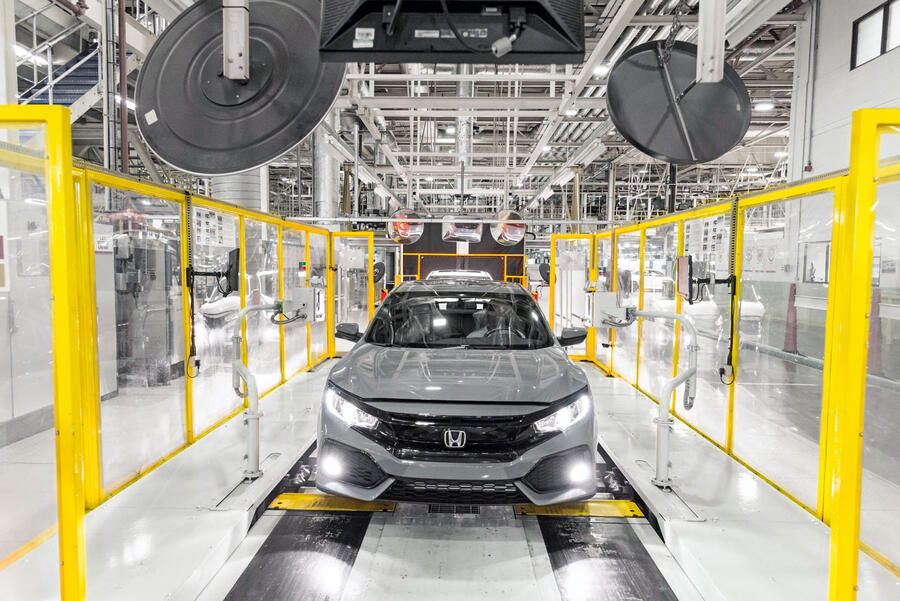
Questions remain about Nissan’s commitment to Sunderland, where it has already pulled planned production of the next X-Trail, blaming the diesel sales downturn and Brexit uncertainty. Recent reports that the factory, which builds the popular Qashqai, will close if the UK leaves the EU without a trade deal adds further fuel to the fire.
However, Toyota’s future in the UK is looking brighter. In 2017, it announced a £240 million investment in its Burnaston plant to accommodate production of vehicles on its new global platform. Another Japanese maker is also helping to secure its future. As part of a tie-up between Toyota and Suzuki, hybrid Suzuki models will be built at the factory. Rachel Burgess
What you need to know
Honda
ï® New i-MMD petrol-hybrid engine promises class-leading fuel economy in cars such as the Civic and Honda Jazz.
ï® Spending on a new plant and R&D is at a high level, which bodes well for the future.
ï® Delivery vans equipped with i-MMD – possibly based on Odyssey MPV – represent an untapped opening.
ï® Honda’s European presence is under serious threat.
Mazda
ï® Electric MX-30, arriving in early 2021, will also get rotary-engined range-extender variant.
ï® Mazda remains committed to petrol and diesel and is also researching biofuel.
ï® Tie-up with Toyota and Denso will help accelerate its electrification plans.
Mitsubishi
ï® Next-gen ASX, due in 2021 after next year’s facelift, will be Mitsubishi’s first EV since the 2009 i-Miev city car.
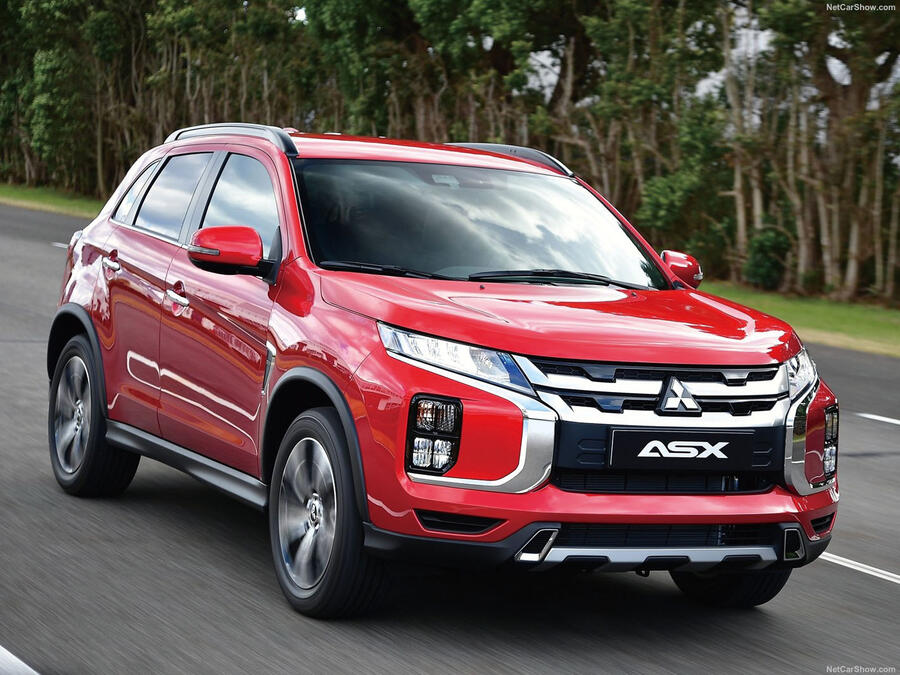
ï® Japan makes the most Mitsubishis (661,000) but is only the fourth-biggest market for sales (104,000).
ï® R&D spend in 2019 will be double that of 2014.
Nissan
ï® Leadership crisis has affected its relationship with Renault and long-term plans.
ï® Readying crucial IMX to grab a slice of the burgeoning electric SUV market.
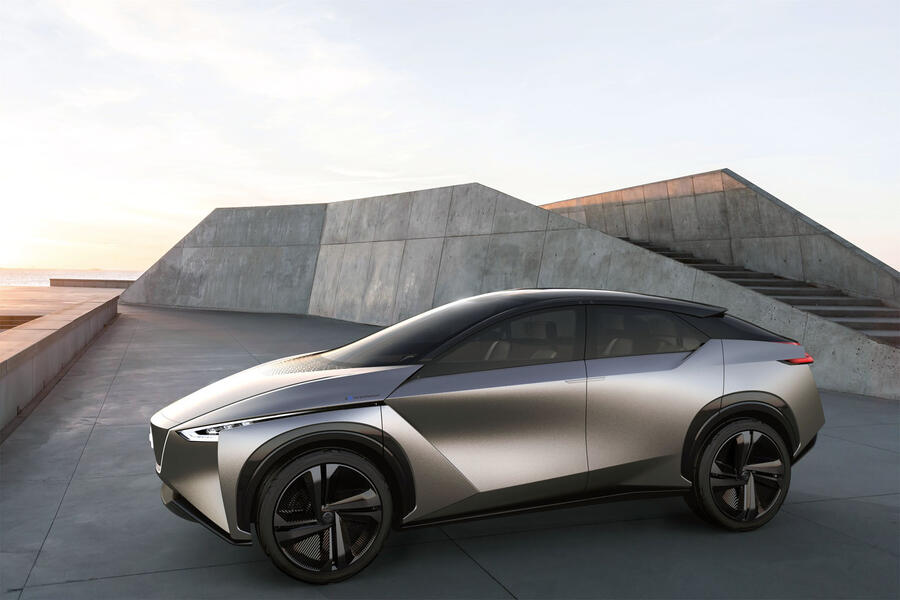
ï® Most recent quarterly profits slumped 55% – and the company has hinted at worse to come.
ï® New Juke will help its UK market share, but Brexit uncertainty continues to threaten its Sunderland plant
Subaru
ï® Tightly run company with a single platform and all-wheel drive.
ï® Toyota’s stake is a big help with electrification and quality processes.
ï® It needs to address its reliance on the US and its tiny presence in Europe.
ï® Plug-in hybrid drivetrains needed soon.
Suzuki
ï® European market share is above 1.5% for the first time in eight years.
ï® UK waiting list for the popular Jimny is 12 months.
ï® Its deal with Toyota will bring Suzuki-badged hybrid vehicles based on the RAV4 and Corolla.
Toyota
ï® Its global sales are growing despite the industry-wide downturn.
ï® Slow in battery-electric space but can use hybrid know-how to catch up.
ï® R&D spend, scale and partnerships give it nearunique level of resource.
ï® Its global sales are growing despite the industry-wide downturn.
ï® Slow in battery-electric space but can use hybrid know-how to catch up.
ï® R&D spend, scale and partnerships give it near-unique level of resource.
READ MORE
2019 Tokyo motor show: show report and pictures
Toyota to launch two-seat EV in 2020
Nissan 'to review future' of Sunderland plant in case of no-deal Brexit
















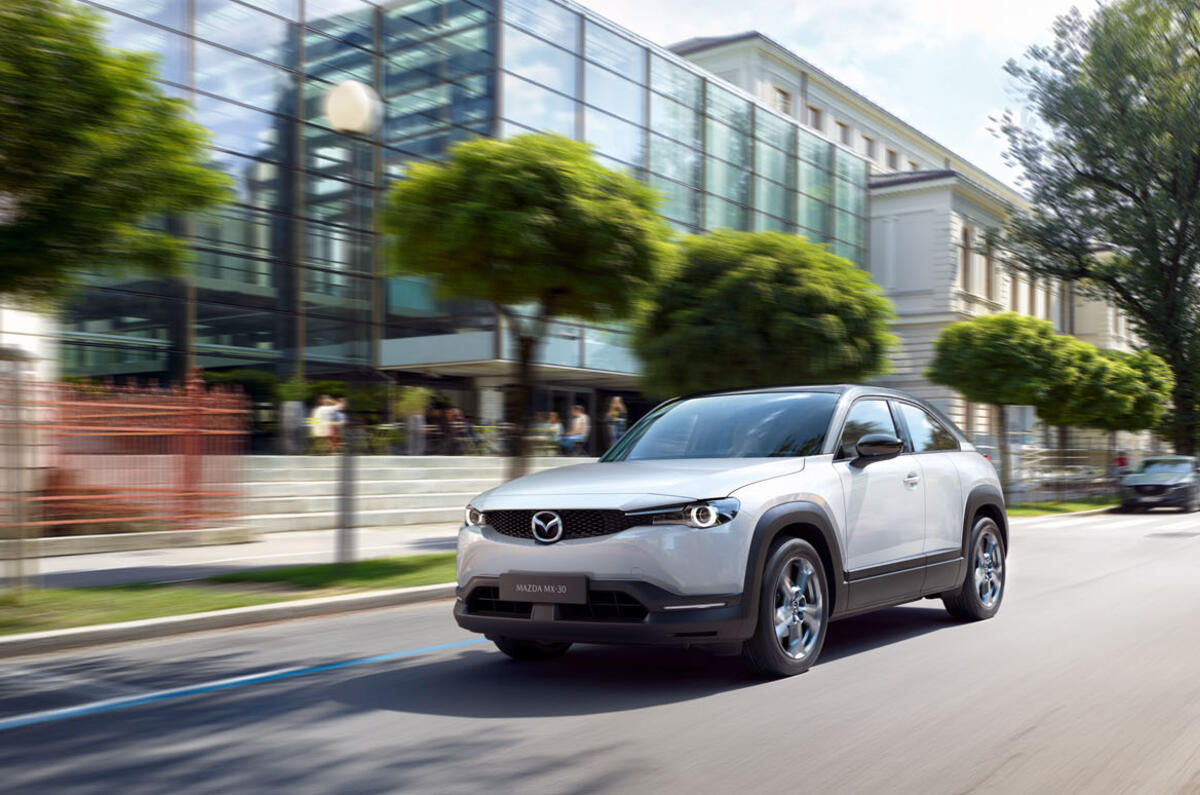















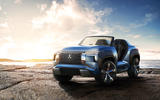












Join the debate
Add your comment
Mazda misery
I've always tried to buy Japanese cars for their reliability, trying to find the odd model that was a bit more than that by offering a bit of excitement as well.
So I bought a brand new Mazda MX-5 - but it was the worst car I've owned in over 30 years of driving (and that includes non-Japanese makes too). The car, dealerships and Mazda UK all let me down badly.
So don't assume all Japanese cars will be reliable, or their customer service standards will be adequate. I personally will never buy another Mazda, or ever recommend them to anyone.
Really?
Really?
Why?
Dunno why I dont believe a word you say.
Simple
The Koreans
Correct, and then the huge
Correct, and then the huge elephant in the room coming.
The Chinese.
Oh how I yearn for a Chinese
The sheer ignorance of some
The sheer ignorance of some people...
Mazda are the only Japanese
Mazda are the only Japanese company making interesting good to drvie cars.